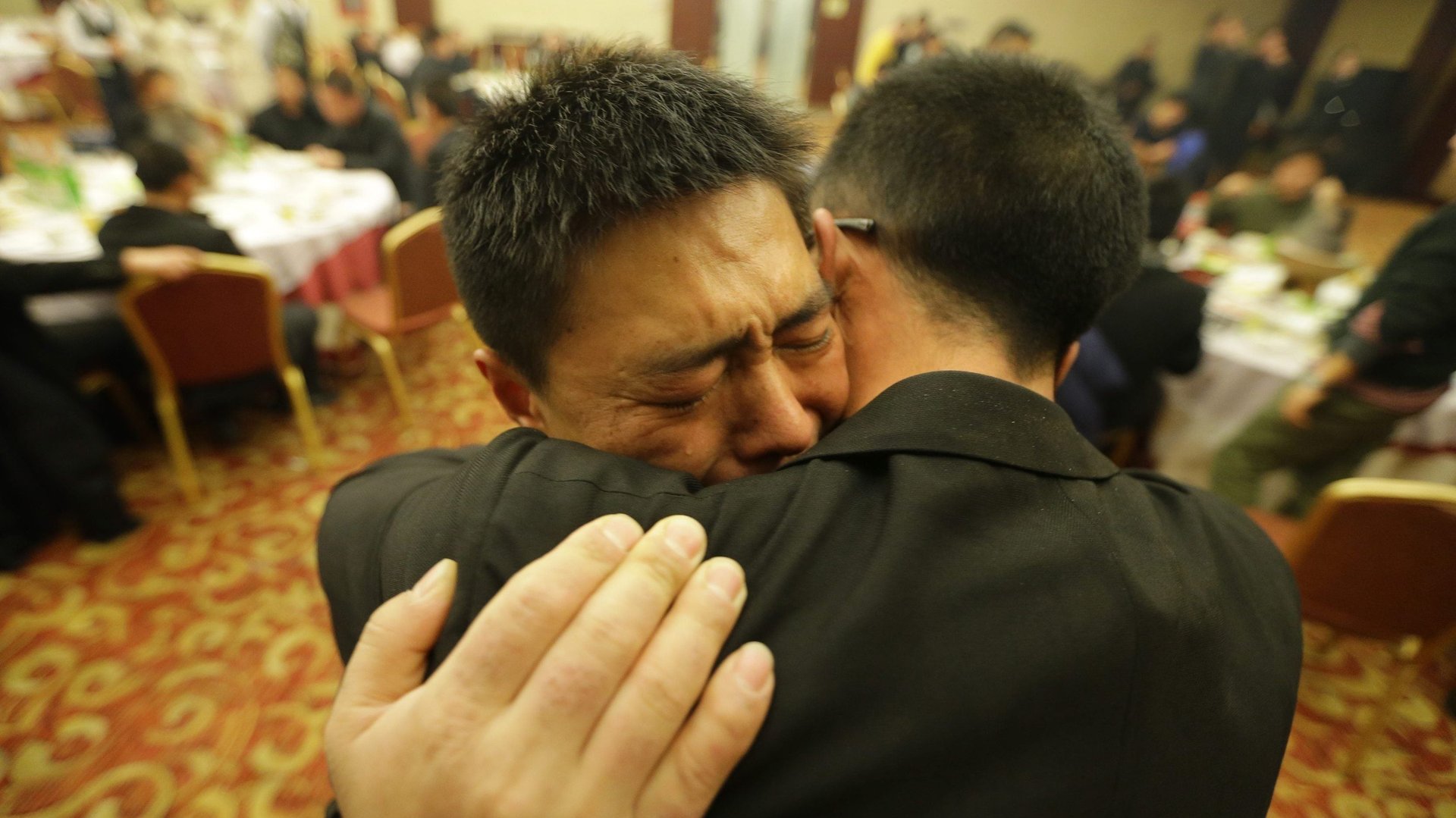Psychology offers a simple rule to consider before you tell someone your woes
The emotional impact of serious trauma tends to ripple across family and friendship groups. Those directly affected (the person who’s seriously ill or caught up in a natural disaster, for example), their loved ones, and closest friends all experience suffering. And when an entire social network is consumed by misery, it can be difficult to know whom to turn to.


The emotional impact of serious trauma tends to ripple across family and friendship groups. Those directly affected (the person who’s seriously ill or caught up in a natural disaster, for example), their loved ones, and closest friends all experience suffering. And when an entire social network is consumed by misery, it can be difficult to know whom to turn to.
Clinical psychologist Susan Silk has developed a clear rule, called “Ring Theory,” for determining to whom one should turn during times of crisis. First, draw a small circle and write down inside it the name of whoever’s directly affected by the trauma. Then draw a slightly larger circle around that, and write down the names of whoever’s closest to the person experiencing trauma. Let’s say you wrote down the spouse of whoever’s directly suffering in that circle; in the next ring, you might put their parents or very closest friends. Then draw an even a larger circle, with the next-closest friends and relatives. And so on, with increasingly distant friends and relatives in the larger circles. It takes some personal awareness to decide just how close you are to the person affected, and which circle you belong in.
The rule is, you can only complain to those in circles larger than the one you’re in. And, when talking to someone in a smaller ring, you can only offer help and support.
This is not to say that those farther from the center of trauma don’t experience suffering; the point is to avoid burdening someone who’s facing even greater difficulties than yourself. And, though it sounds straightforward and even obvious, plenty of people unintentionally flout this rule.
“Everyone wants to help. No one intentionally puts their foot in their mouth, but people just don’t know what to say and sometimes their own vulnerability comes out in klutzy ways,” says Silk.
She has personally seen this principle ignored several times. After Silk had surgery several years ago, she says one colleague tried to insist on visiting even though she had made it clear that she didn’t want visitors (“this isn’t just about you,” said the colleague.) And, when her niece had lymphoma as a child, Silk saw how difficult and unnecessary it was for her sister, the child’s mother, to be bombarded with questions and concerns from worried relatives.
Many people are upset by such health crises, but should still only turn to those less affected than themselves for support. “It’s managing that ripple effect, whether we’re talking about leukemia or Hurricane Harvey,” she adds.
Silk says she uses the principle to help her clients navigate personal crises, such as when one client’s wife was being treated for cancer. “At first, he thought he was being loving by telling his wife how frightened he was. He thought that was a compassionate gesture,” she says. “This was incredibly helpful for him—to normalize and validate all of his feelings of vulnerability, grief, mourning, and concern, and help him channel that in productive ways.”
Couples may have learned to share every concern and vulnerability with each other but, in this instance, the person going through the health crisis needed support more than she needed to hear her spouse’s personal fears. As a caretaker, the husband had to put on a brave face despite his own worries, says Silk. “He had to find another outlet [for his concerns],” she adds.
It can be hard to deal with someone who doesn’t stick to ring theory. But Silk says it’s fine to take a stand. When a distant aunt starts wailing about her own fears, you can kindly say, “I’m really overwhelmed myself and I can’t go there with you right now,” and perhaps even recommend someone she can talk to.
The fears of distant aunts are no less legitimate than anyone else’s but, during times of trauma, they should turn to even more distant relatives to start wailing.